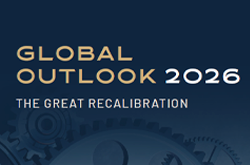Hot summer, cold war
Monthly House View - August September 2025 - Download here [ENG]
Monthly House View - August September 2025 - Download here [CN]
As trade tensions reach a boiling point this summer, the news flow remains as heated as ever. Over the past year, the effective rate of tariffs applied by the United States of America (US) has skyrocketed, climbing from 2.5% to around 15%, even before the latest rounds of tariffs take effect this summer. The result? A double burden for American consumers: higher prices on imported goods due to tariffs and, to a lesser extent, the depreciation of the dollar. This pressure has driven inflation to rise, reaching 2.7% in June, with further acceleration expected in the coming months— albeit at a slower pace than originally projected. On the geopolitical front, the US is ramping up its trade offensive in Southeast Asia. Some countries in the region are now facing tariffs as high as 40%, indirectly striking at China’s supply chain. The focus? Transshipment—a practice where goods, often manufactured in China, are routed through a third country, such as Vietnam, before being exported to the US. Vietnam’s recent trajectory partially illustrates this dynamic. Capitalising on US-China trade tensions, Vietnam has seen its manufacturing output surge by an impressive 70% over the past eight years, with a near-perfect correlation between the country’s rising imports from China and its booming exports to the US.
Looking further, President Donald Trump is targeting countries aligned with the “anti-American” policies of the BRICS bloc (Brazil, Russia, India, China, South Africa). The threat? Additional tariffs on nations supporting initiatives like BRICS Pay, a blockchain-based international payment system designed to bypass SWIFT and promote local currencies. Donald Trump pointed out, “The reserve currency is so important. You know, if we lost the dollar as the world’s reserve currency, it would be like losing a World War.” Against this tense geopolitical backdrop, we will be closely monitoring the Federal Reserve’s (Fed) upcoming 4th Conference on the International Roles of the US Dollar, set to take place on 25 and 26 September in New York. Among the topics on the agenda is a focus on cross-border payments.
Meanwhile, Trump is also escalating his stance on the conflict in Ukraine. He has threatened to impose “secondary” tariffs of 100% if a ceasefire is not achieved by 2 September. These sanctions, which raise questions about their feasibility, could target the energy sector, including oil, by hitting Russia’s key trading partners such as China and India.
In his quest for the Nobel Peace Prize, Donald Trump presents a dual image: positioning himself as a peacemaker seeking to end open conflicts, while simultaneously fuelling a new Cold War with China. His assessment is accurate—the supremacy of the US and the dollar are under threat. However, his response, centred on massive tariffs, could prove counterproductive, hitting Americans’ wallets first. The “One Big Beautiful Bill Act” aims to fuel the US economic engine, but the revenues generated by tariffs may fall short of offsetting their impact on public finances.
Nevertheless, the global economy—and the US economy—remains resilient. According to the International Monetary Fund (IMF), only 5% of countries worldwide are at risk of recession, a historically low level not seen since 2007. Unemployment in OECD countries has also reached a record low of 5%, while corporate profits surged by 7% year-over-year in the first quarter, driving stock markets to new highs in most advanced economies.
In this edition, we invite you to dive deeper into the topic of US fiscal tensions, and we will also focus on Europe, examining both the productivity challenge and the future of the single currency as the Euro Area prepares to welcome its 21st member—Bulgaria.
Monthly House View, 23.07.2025. - Excerpt of the Editorial
August 06, 2025




